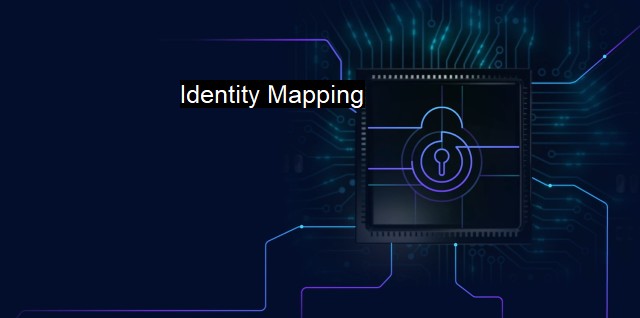What is Identity Mapping?
Importance of Identity Mapping in Cybersecurity and Antivirus Software: Ensuring Only Authorized Access to Network Resources
Identity mapping refers to a critical mechanism that links an individual's identity across multiple data formats or systems. This concept is exceptionally vital in managing information security across various digital platforms, which significantly contributes to overall cybersecurity optimized efforts.One way to perceive identity mapping is as a magnifying glass over the intricate world of cyber communication networks. This network synergy comprises numerous individuals or entities possessing unique identities integrated within a pervasive data-driven ecosystem.
Identity mapping maintains a comprehensive matrix of all users, clearly defining who holds access to what resources, why that access is justified, and how that access is implemented. Effective identity mapping translates to efficient identity and access management (IAM) strategies, which are central to safeguarding organizational cybersecurity fabrics.
IAM is a structurally formal program encapsulating security policies that ensure the correct people access the appropriate resources at the right time, and for legitimate reasons. Digital entities usually comprise individual users, servers, devices, applications, or systems – all requiring significant planning in their access management. Thus, as an IAM strategy component, identity mapping represents a potent measure against unauthorized access, one of the perennial battles in achieving robust cybersecurity.
Specifically, in the antivirus scene, identity mapping also plays an essential role. Antivirus software detects and deals with digital threats like malware- including viruses, rootkits, and ransomware- especially those seeping through online web interaction and transferred data. Since these threats typically sneak past security measures by mimicking reliable sources or identities, having an efficient identity mapping system becomes imperative. This intervention empowers cyber systems to identify and flag any inconsistencies in entity behavior pattern, elevating threat management to a significantly higher level.
For instance, if a software identity understood as a marketing tool starts operating outside of its typical hours or begins extracting and transferring sizeable data chunks, an effective identity mapping integrated with an anomaly detection system could raise an alert as to this software's suspicious activity. By doing so, it restricts the potential damage scope and prevents further network infiltration considering the necessary reactive measures are promptly enforced. Such a feat would be impossible without an efficient identity mapping mechanism, provided concurrent digital identities and activities would dominantly implement chaos and confusion.
Since cyber threat actors continuously overshoot their game – using sophisticated strategies to slip past security defenses – the full leverage of identity mapping features is acquired only with a layered secure architecture that executes regular updates. It needs to accustom itself to rapidly fluctuating cyber threat environments and adapt, learn and evolve to enforce necessary protections onto an organization's online premises.
The oppressive global privacy regulations incumbent on digital activities usher in an increased relevance for identity mapping. By managing and logging data flows, identity mapping techniques aid in compliance to legal dispensations like GDPR or CCPA, including third-party risk information treatment regulations.
Constructively, evolving AI and Machine Learning technologies also tend to broaden Identity Mapping's scope within next-generation antivirus environments. Advancements likely to result in more intuitive threat detection, complete with predictive capabilities. Hence, creating safer, more secure systems.
Identity mapping has steadily transitioned to a necessary component in the cybersecurity armor – illuminating entity roles, guarding access implementations, maintaining secrecy of sensitive data, and encouraging the proliferation of more secure user interactions. As the battlefront against cyber threats persistently modernizes and escalates, implementing efficient identity mapping techniques could help tip the scales in favor of the defense. Precisely why organizations across the world are gradually turning awareness into action, investing efforts and resources into formulating comprehensive identity tracking and access management strategies incorporating identity mapping at its core.

Identity Mapping FAQs
What is identity mapping?
Identity mapping is the process of linking a user's identity, such as their username or email address, to their corresponding access privileges within an organization's network or system.Why is identity mapping important for cybersecurity?
Identity mapping is crucial for cybersecurity because it allows organizations to identify and authenticate users, ensuring that only authorized individuals have access to sensitive information and systems. By accurately mapping identities to their corresponding access privileges, organizations can limit the risk of unauthorized access and data breaches.How does identity mapping relate to antivirus software?
Antivirus software uses identity mapping to determine which users have permission to perform certain actions within the system, such as installing or updating software. This allows the antivirus software to restrict certain users from making changes that could compromise the security of the system, such as inadvertently installing malware.What are some best practices for implementing identity mapping in an organization?
To successfully implement identity mapping, organizations should first conduct a thorough inventory of all users, access privileges, and network/system resources. From there, it's important to establish a clear and consistent naming convention for usernames and system resources, and to maintain accurate records of user activity and access privileges. It's also critical to regularly review and update access privileges to ensure that they remain up to date and aligned with the organization's security policies and procedures.| | A | | | B | | | C | | | D | | | E | | | F | | | G | | | H | | | I | | | J | | | K | | | L | | | M | |
| | N | | | O | | | P | | | Q | | | R | | | S | | | T | | | U | | | V | | | W | | | X | | | Y | | | Z | |
| | 1 | | | 2 | | | 3 | | | 4 | | | 7 | | | 8 | | |||||||